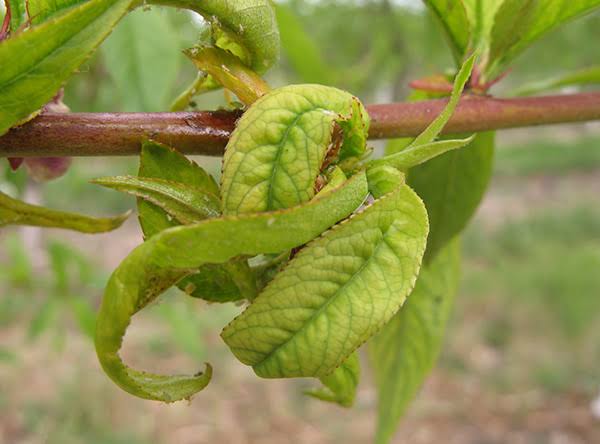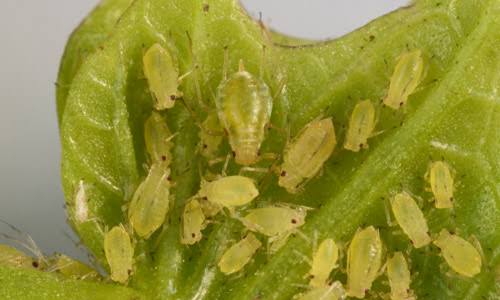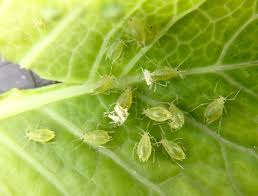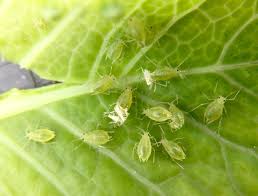The Green Peach Aphid, scientifically known as Myzus persicae, is a tiny insect that belongs to the Aphididae family. These small, soft-bodied insects are commonly found on various plants, particularly those belonging to the Rosaceae family, such as peaches and other stone fruits.
These aphids are named “Green Peach Aphid” due to their characteristic green coloration. However, it’s essential to note that their appearance can vary depending on factors such as environmental conditions and the host plant they infest. Despite their diminutive size, these insects can have a significant impact on agriculture and horticulture.
Green Peach Aphids feed on plant sap by using their piercing-sucking mouthparts to extract nutrients from the phloem vessels of host plants. This feeding behavior can lead to stunted growth, deformities, and the transmission of plant viruses. Additionally, the honeydew excreted by these aphids serves as a substrate for the growth of sooty mold, further affecting the overall health of the plants.
One noteworthy characteristic of Green Peach Aphids is their ability to reproduce rapidly. Females can give birth to live offspring without the need for mating, a process known as parthenogenesis. This reproductive strategy allows for a swift increase in population size under favorable conditions, posing a challenge for pest management.
Natural enemies, such as ladybugs and parasitoid wasps, play a crucial role in controlling Green Peach Aphid populations. Integrated pest management strategies often involve promoting the presence of these natural predators to maintain a balance in the ecosystem.
The management of Green Peach Aphids also involves cultural practices, such as crop rotation and the removal of weed hosts. Additionally, the use of insecticidal soaps or neem oil can be employed as a more environmentally friendly approach to control aphid infestations.
The Green Peach Aphid, or Myzus persicae, is a notable pest in agriculture due to its feeding habits and rapid reproduction. Understanding its biology and implementing effective pest management strategies are essential for mitigating the impact of this tiny yet formidable insect on crops and plant health.
Read Also: How to Grow, Use and Care for Yellow Groove Bamboo (Phyllostachys aureosulcata)
Plants Affected by Green Peach Aphid

Green Peach Aphids (Myzus persicae) are known to infest a wide range of plants, with a particular affinity for those belonging to the Rosaceae family. Some of the notable plants affected by Green Peach Aphids include:
1. Peach Trees (Prunus persica): As the name suggests, Green Peach Aphids have a strong association with peach trees. They feed on the sap of peach plants, affecting their growth and potentially transmitting plant viruses.
2. Plum Trees (Prunus domestica): Plum trees, being a part of the Rosaceae family, are susceptible to infestation by Green Peach Aphids. Aphid feeding can lead to deformities and reduced vitality in plum plants.
3. Cherry Trees (Prunus avium and Prunus cerasus): Both sweet and sour cherry trees are vulnerable to Green Peach Aphid infestations. The aphids can compromise the overall health of the trees and impact fruit quality.
4. Apple Trees (Malus domestica): Apple trees, another member of the Rosaceae family, can be affected by Green Peach Aphids. Aphid feeding may result in distorted leaves and a decrease in apple yield.
5. Strawberry Plants (Fragaria × ananassa): Green Peach Aphids are known to infest strawberry plants, affecting the growth of the leaves and potentially transmitting viruses that can impact fruit quality.
6. Potato Plants (Solanum tuberosum): While not belonging to the Rosaceae family, potato plants can also be affected by Green Peach Aphids. Aphid infestations on potato plants can lead to reduced yields and may facilitate the transmission of certain plant diseases.
7. Cabbage Family (Brassicaceae): Green Peach Aphids can also target plants belonging to the cabbage family, including cabbage, broccoli, and kale. Aphid feeding on these plants can cause stunted growth and impact crop quality.
It’s important to note that Green Peach Aphids are highly adaptable and can infest various other plants beyond those mentioned. Monitoring and early detection are crucial for implementing effective pest management strategies to mitigate the impact of these aphids on different crops.
Damages Caused by Green Peach Aphid

Green Peach Aphids (Myzus persicae) can cause significant damage to plants, impacting both their growth and overall health. The damages caused by these aphids include:
1. Feeding on Sap: Green Peach Aphids use their piercing-sucking mouthparts to feed on plant sap. This feeding activity deprives the plant of essential nutrients, leading to weakened growth, stunted development, and overall reduced vitality.
2. Deformation of Plant Parts: Aphid feeding can cause deformities in various plant parts, such as leaves, stems, and flowers. Distorted growth may result in misshapen leaves, curled or twisted stems, and abnormal flower development.
3. Transmission of Plant Viruses: Green Peach Aphids are known vectors of several plant viruses. As they feed on infected plants, they can acquire and transmit viruses to healthy plants during subsequent feedings. This transmission of viruses can lead to diseases that further compromise the health and productivity of affected plants.
4. Honeydew Production: Aphids excrete a sugary substance known as honeydew while feeding. The presence of honeydew on plant surfaces provides a substrate for the growth of sooty mold, a dark-colored fungus. Sooty mold can cover leaves and reduce photosynthetic activity, negatively impacting the plant’s ability to generate energy.
5. Reduction in Crop Yields: Severe infestations of Green Peach Aphids can result in a noticeable reduction in crop yields for agriculturally important plants. This is particularly concerning for crops like peaches, plums, apples, and others belonging to the Rosaceae family, as aphids can compromise the quality and quantity of the harvest.
6. Rapid Population Growth: Green Peach Aphids reproduce quickly, especially through parthenogenesis, where females give birth to live offspring without mating. This rapid reproduction can lead to explosive population growth under favorable conditions, exacerbating the potential for widespread damage.
7. Indirect Damage through Stress: Aphid feeding induces stress on plants, making them more susceptible to other environmental stresses, diseases, and pests. Weakened plants are less resilient and may succumb more easily to additional challenges.
Understanding the damages caused by Green Peach Aphids is crucial for implementing effective pest management strategies to protect crops and mitigate the economic and ecological impact of these tiny but potentially destructive insects.
Read Also: How to Grow, Use and Care for Yellow Indiangrass (Sorghastrum nutans)
Control and Preventive Measures

Controlling and preventing Green Peach Aphid (Myzus persicae) infestations is essential for protecting plants and crops. Several measures can be employed to manage these aphids effectively:
1. Biological Control:
Natural Predators: Encourage the presence of natural predators such as ladybugs, lacewings, and parasitoid wasps, which feed on Green Peach Aphids. These predators can help maintain aphid populations at manageable levels.
Predatory Insects: Introduce or attract predatory insects that specifically target aphids, creating a natural balance in the ecosystem.
2. Cultural Practices:
Crop Rotation: Practice crop rotation to disrupt the life cycle of Green Peach Aphids. Moving crops to different locations each season can reduce the likelihood of persistent aphid infestations.
Weed Management: Remove weeds, as they can serve as alternative hosts for aphids. Keeping the surrounding area free from weeds helps reduce the available habitat for aphids.
3. Mechanical Control:
Hosing: Use a strong stream of water to dislodge aphids from plants. This can be an effective method for smaller infestations, particularly on ornamental plants.
Pruning: Remove heavily infested plant parts to reduce aphid populations. Proper disposal of pruned material is crucial to prevent the aphids from reinfesting other plants.
4. Chemical Control:
Insecticidal Soaps: Use insecticidal soaps to control aphids. These soaps disrupt the outer cell membranes of the aphids, leading to dehydration and death. Insecticidal soaps are a more environmentally friendly option.
Neem Oil: Neem oil is another botanical insecticide that can be effective against aphids. It interferes with their feeding and reproduction, providing a natural control method.
5. Resistant Plant Varieties:
Select Resistant Plants: Choose plant varieties that are less susceptible to Green Peach Aphid infestations. Some plants have natural resistance or tolerance to aphids, making them less attractive hosts.
6. Early Detection and Monitoring:
Regular Inspection: Monitor plants regularly for early signs of aphid infestations, such as curled leaves or the presence of honeydew. Early detection allows for prompt intervention and prevents the rapid buildup of aphid populations.
7. Companion Planting:
Beneficial Plants: Plant companion crops or flowers that attract beneficial insects, creating a habitat that encourages the presence of natural predators to control aphid populations.
Implementing an integrated pest management (IPM) approach, combining multiple strategies, is often the most effective way to control and prevent Green Peach Aphid infestations while minimizing the impact on the environment.
Frequently Asked Questions (FAQs) About Green Peach Aphid (Myzus persicae)
Q1: What is Green Peach Aphid?
A: The Green Peach Aphid (Myzus persicae) is a small insect that feeds on plant sap, particularly on plants belonging to the Rosaceae family, such as peaches, plums, and apples.
Q2: How can I identify Green Peach Aphids?
A: Green Peach Aphids are tiny, soft-bodied insects with a characteristic green color, though their appearance can vary. They have pear-shaped bodies and feed on plants by piercing and sucking sap from the phloem vessels.
Q3: What kind of damage do Green Peach Aphids cause?
A: Green Peach Aphids can cause damage by feeding on plant sap, leading to stunted growth, deformation of leaves and stems, and a reduction in overall plant health. They also transmit plant viruses and produce honeydew, fostering the growth of sooty mold.
Q4: Are Green Peach Aphids harmful to all plants?
A: While they have a preference for plants in the Rosaceae family, Green Peach Aphids can infest a variety of plants, including strawberries, potatoes, and those in the cabbage family. They are adaptable and can impact a broad range of host plants.
Q5: How do I control Green Peach Aphids naturally?
A: Natural control methods include encouraging the presence of beneficial insects like ladybugs and parasitoid wasps, practicing crop rotation, and using insecticidal soaps or neem oil. These methods help manage aphid populations without relying on chemical pesticides.
Q6: Can Green Peach Aphids be controlled without using chemicals?
A: Yes, various non-chemical methods, such as biological control, cultural practices, and mechanical control, can be effective in managing Green Peach Aphids. These methods focus on creating a balanced ecosystem and minimizing the use of synthetic pesticides.
Q7: How fast do Green Peach Aphids reproduce?
A: Green Peach Aphids reproduce rapidly, especially through parthenogenesis, where females give birth to live offspring without mating. This reproductive strategy enables them to quickly increase their population under favorable conditions.
Q8: Are there plants that are resistant to Green Peach Aphids?
A: Some plant varieties exhibit natural resistance or tolerance to Green Peach Aphids. Choosing resistant plant varieties can help reduce the risk of aphid infestations and minimize the need for intensive pest management.
Q9: What is Integrated Pest Management (IPM) for Green Peach Aphids?
A: Integrated Pest Management is an approach that combines various strategies, including biological control, cultural practices, and selective use of pesticides. IPM aims to manage pest populations effectively while minimizing environmental impact and ensuring sustainable agricultural practices.
Q10: Can Green Peach Aphids be harmful to humans?
A: Green Peach Aphids are not harmful to humans. They primarily pose a threat to plants by feeding on their sap and potentially transmitting plant viruses. The damage they cause is mainly of concern for agriculture and horticulture.
Read Also: How to Grow Microgreens

